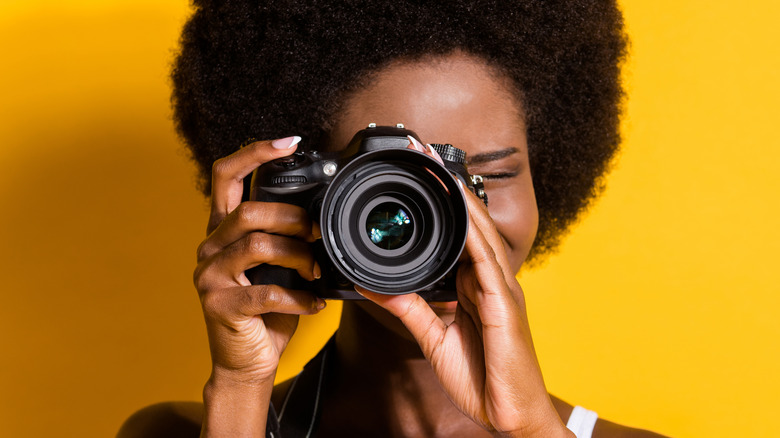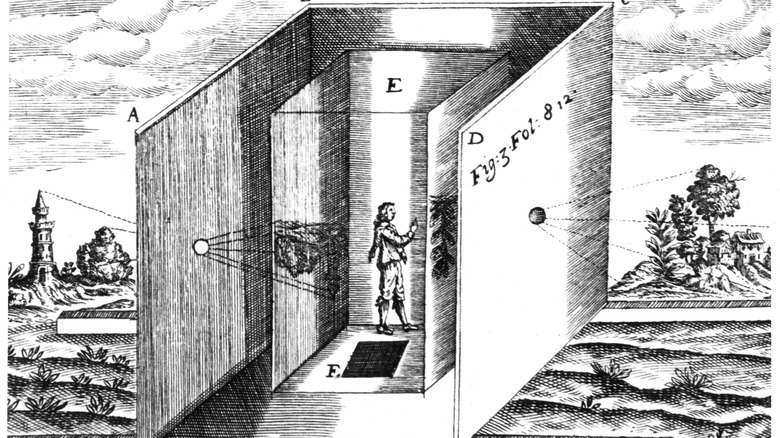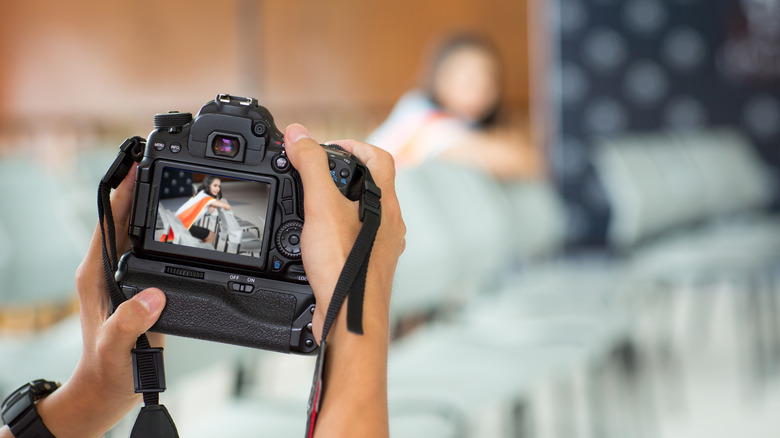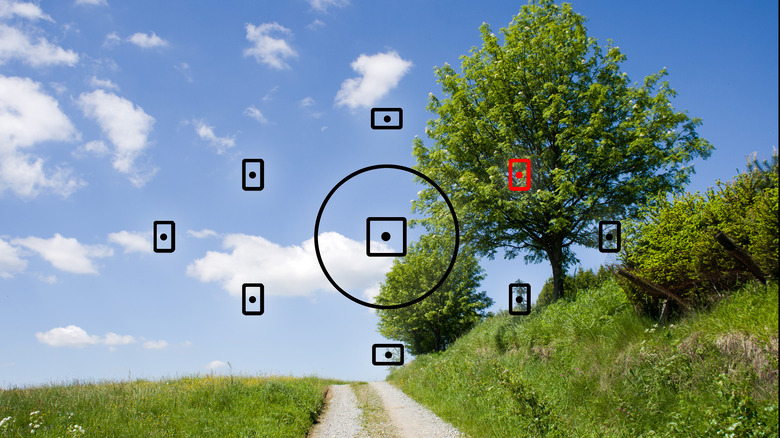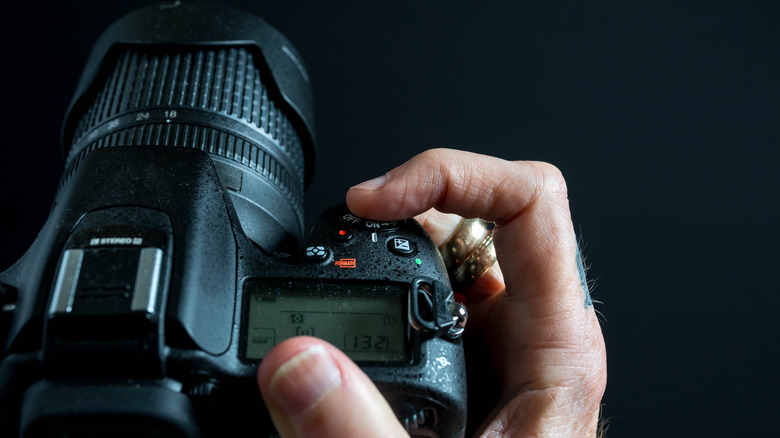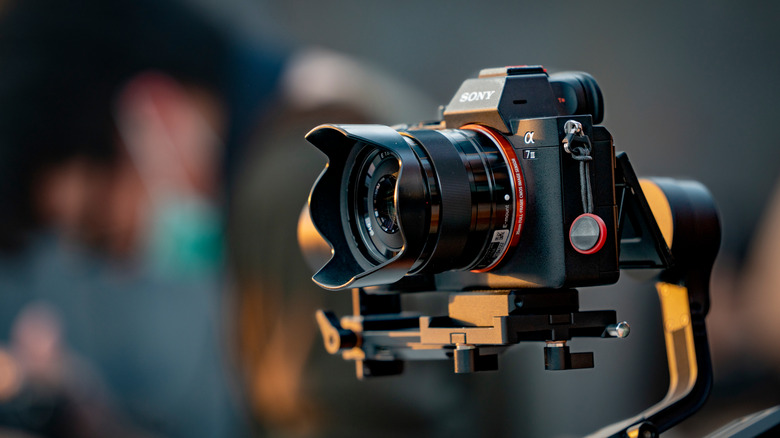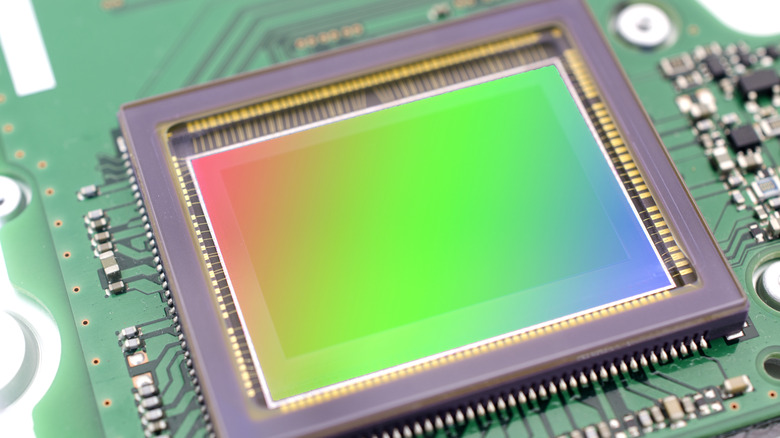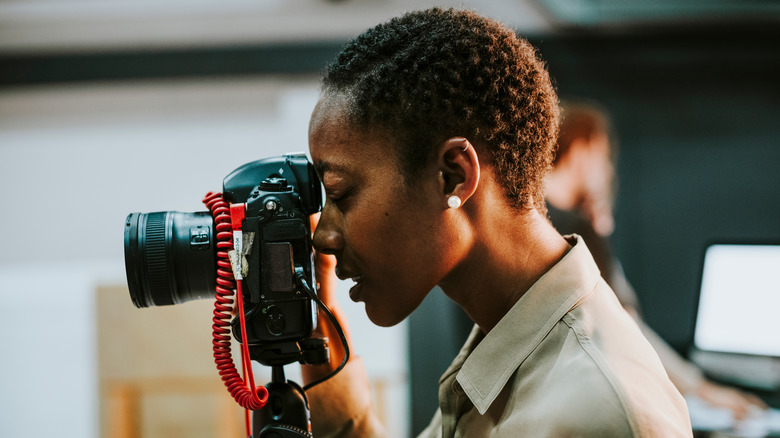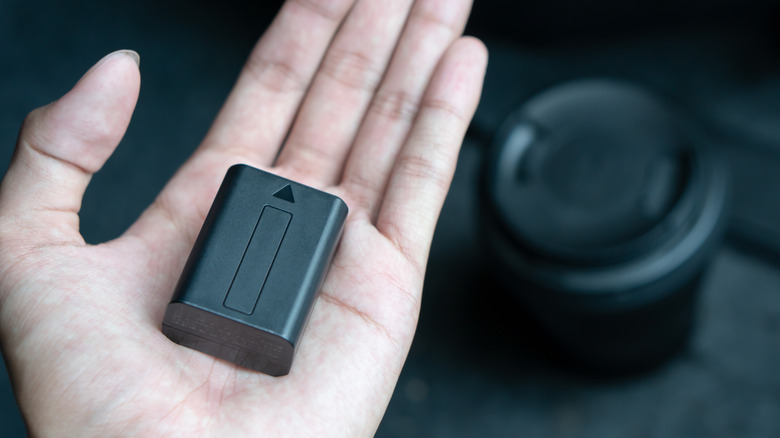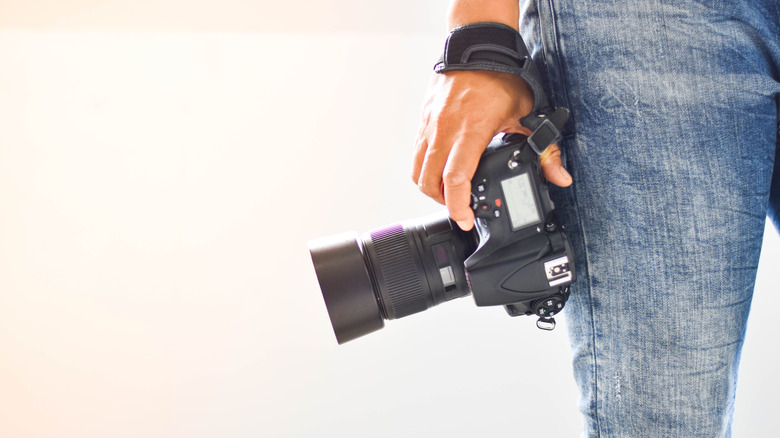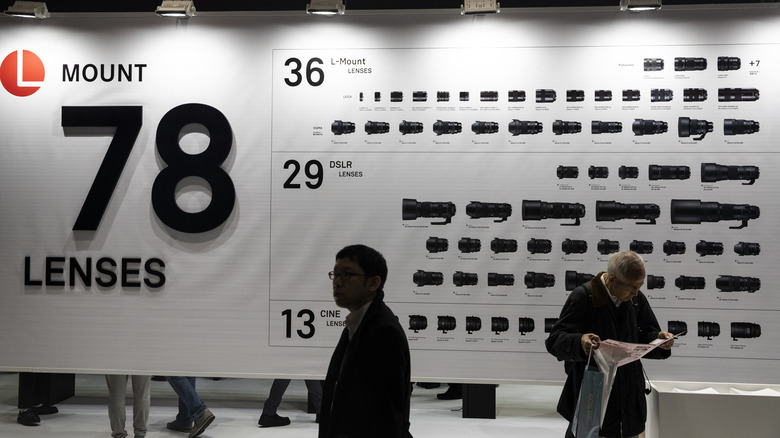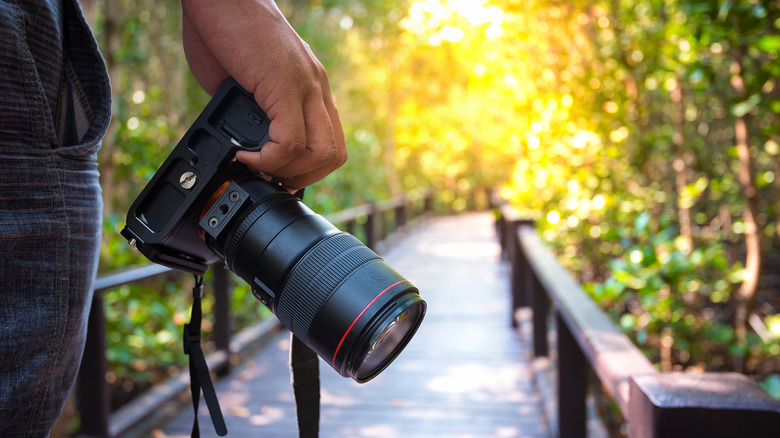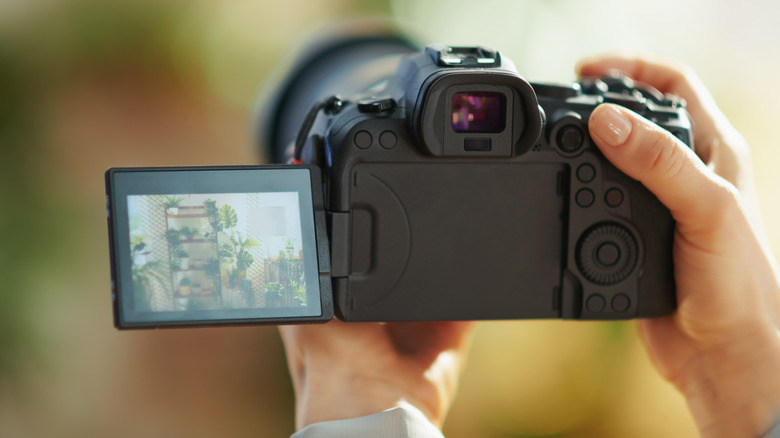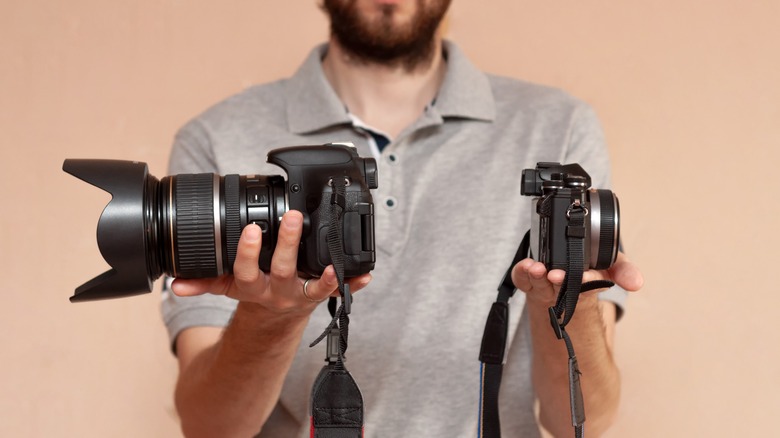The Differences Between DSLRs And Mirrorless Cameras
A camera — in essence — is nothing more than a sealed box with a small hole (the lens) at the front, which collects light and "beams" an image onto a light-sensitive surface inside in order to record an image. That opening line always caught people's attention when I used it during photography workshops.
It's a very simple, bare-bones definition, and true in essence, but there is a lot more to these devices that allow us to capture and preserve moments in time so easily and effortlessly. Now we have various types of cameras, but there are two most photographers and hobbyists use today — DSLR and mirrorless.
Though there is no clear answer across the board as to which is better, this debate still rages in the photography world. So let's dive deep to take a look at what a camera actually is in terms of the method of how pictures are captured, and how these two types of camera differ in that respect. We'll also look at each one's respective pros and cons.
Brief history of cameras
The idea of the cameras is old — very old, in fact.
The history of the cameras we know today begins even before the introduction of photography. Sometime after the extinction of the dinosaurs and before modern civilization, in ancient Greece and China, the "Camera Obscura" was conceptualized and used (via Tech Talk). This was nothing more than a simple, yet ingenious, box (or entire "room" at that time) to capture the light entering through a small hole in the front, in order to project an inverted image of real-life scenes with the collected light onto a wall opposite the opening.
As you can probably imagine, this new technology caused quite a stir. The experience of seeing these images enjoyed popularity for hundreds of years. Naturally, time passed and these "devices" became slightly more advanced, as Tech Talk notes. It took a very long time and many iterations of the cameras from those days to arrive at the present. Even now with our modern technology — whether the bulkier DSLR or the lighter mirrorless cameras — the basic premise is still the same. Each is a fancy box for capturing light, albeit with some noticeable differences.
Parts of a camera
To talk about the similarities and differences between these two types of modern cameras, first, we need to understand the inner workings of modern cameras.
Based on the SLR, or Single Lens Reflex cameras, which came on the scene just after WWII, both DSLR and mirrorless cameras feature:
- a lens through which the light enters the body and gets focused
- a medium to record the images — namely, the sensor
- a shutter mechanism in front of it to control the amount of light exposure on the sensor at one time
- a viewfinder through which you can compose the scene you want to capture
In a DSLR, you also have the mirror array inside.
This is the biggest difference between these camera types. As the name suggests, mirrorless do not have a mirror, thus allowing them to be smaller, more lightweight, and more compact in general. I've been teaching photography principles for many years now and within the last three years or so, I've seen a dramatic increase in people using mirrorless cameras, hinting at a major focus shift in the industry.
Which camera is the best for Instagram?
Before we get to the role this wildly popular social media platform plays in the uptick of camera sales in recent years, let's take a look in the mirror, or rather — at the mirror — and the importance such a simple thing plays in photographic imaging.
The one and only function of a mirror is to show you a reflected image. That's pretty much its role in a camera as well. The mirror inside a DSLR camera allows the user to see the image, via the lens, in the viewfinder.
In a traditional (D)SLR, the light enters through the lens, and the image is shown in the viewfinder via a larger angled mirror attached just in front of the shutter mechanism. Two small angled mirrors redirect the light up, while also flipping the image so you can see it right side up when you look through the viewfinder.
This mechanism is one of the main benefits of a DSLR — the mirror-enabled view in the optical viewfinder provides an up to the second glance of what's in the scene in front of the photographer. There is no lag whatsoever.
The viewfinder
While DSLRs still use optical viewfinders, mirrorless cameras instead use power-intensive electronic viewfinders, and it's only the very best of these that are able to even approach the immediacy of their optical counterparts. For most commercially available models, a trained eye can notice a slight visual lag on the screen. It's not the end of the world, but still detracts a bit from "being in the zone" when you're taking a picture. As a photographer, I've always thought there is a sort of meditative aspect to taking pictures, and for me, at least, it was more difficult to get that same feeling looking at a screen instead of straight through the lens such as in optical viewfinders.
Progress is inevitable, however, and electronic viewfinders have come a long way from their first iterations just a few years ago. They are getting quite a lot better these days, approaching a clarity that genuinely reflects optical viewfinders in both resolution and (lack of) lag (via Digital Camera World). Panasonic's Lumix S cameras brought the highest electronic viewfinder (EVF) resolution to the table at over 5 million dots, and Sony's A1 has an astounding 9.44 million dots to offer.
One major advantage of electronic viewfinders over traditional optical ones is being able to see any adjustments made, such as white balance or exposure changes, in real time.
Autofocus
Autofocus on DSLRs is reliable and snappy, thanks to their phase-detection AF systems. In the past, this was typically much faster than the Contrast-Detect AF in mirrorless and compact cameras, including smartphone cameras — a deal-breaker in mirrorless cameras for action/sports photogs. Then, it was nearly impossible to find sports photographers using mirrorless systems for that very reason — they simply couldn't focus fast enough.
That's because contrast-detect AF works by shifting the lens focus until the image seen by the sensor looks sharpest, Digital Camera World notes. While precise, this is quite slow. Trying hard to eliminate this drawback, camera manufacturers eventually managed to integrate the much faster phase-detection autofocus into the camera sensor itself by using a hybrid method of phase-detection AF points for speed, coupled with contrast AF for precision. With this hybrid system, the latest mirrorless cameras now challenge DSLRs for speed and accuracy in that regard.
This already makes a huge difference in professional settings. On top of that, this hybrid autofocus system can cover each autofocus point across the entire frame, a feat still impossible on DSLRs.
Mirrorless cameras once had the advantage of better Live View autofocus, meaning focusing when composing your shot using the rear LCD screen. However, DSLRs have played catch-up in that regard. Recent models like the Canon EOS-1D X Mark III and the Nikon D780 make use of on-sensor phase detection autofocus technology to deliver an experience on-par with mirrorless, while retaining the handling of a DSLR.
What happens when you press the Shutter?
In short, a picture is taken. But it's not quite that simple. When you press the shutter, quite a few things happen inside the camera. In a traditional (D)SLR, when you press the shutter button, the mirror actually flips up, out of the way, to let the light information pass through and be recorded on the inserted film (one frame equaling 35mm) just behind the shutter. It then flipped down again. Depending on the available light, this either happens very quickly (milliseconds), or slowly (several seconds, or even minutes if the light level is very low). In photographic terms, this is called the Shutter Speed — the time interval of how quickly or how slowly the mirror flips up and thus the amount of time the shutter stays open during an exposure.
In a Mirrorless camera, there is no mirror mechanism inside. This saves space and weight. But with no mirror for viewing the image and blocking the light until you're ready to take an exposure, mirrorless cameras rely on an electronic shutter instead. Rather than flipping the mirror up and down to control exposure, the imaging sensor is simply turned on and off, thus limiting the exposure time electronically. This method has one drawback. When the sensor is turned on during an exposure, the sensor scans line by line sequentially. For normal subjects, this makes no difference, but for fast-moving subjects, rolling shutter distortion can be seen in the image.
Mirrorless cameras have no blackout period
Another pro of mirrorless cameras is that there is no blackout period when you're taking a picture. Due to its reliance on a mirror, which has to be flipped up during exposure, in this mirror-up phase of taking a photo, in a (D)SLR, you can't see through the viewfinder for that period of time. This, of course, is not true for mirrorless cameras, so you can see the picture you're taking during the exposure.
A quick mention must be made of the mirrorless camera's ability to take pictures completely silently. This is impossible with a DSLR due to the moving parts (the mirror slap) inside. Ironically, the very thing which gives each DSLR a certain "character" is also the one thing that tends to disturb guests at a wedding, for instance. Event photographers have to be extremely careful about when to take pictures so as not to ruin a beautiful moment due to their camera's mirror slap.
In mirrorless cameras, no moving parts mean no mirror slap. This makes it a lot easier to get great shots at events, and this also keeps the guests happier and in the moment. No wonder mirrorless cameras have surged in popularity particularly in that field. Of course, the sound is part of photography, so naturally there's a setting for turning that sound (albeit electronically) on – often with several different sounds to choose from.
The sensor
As camera technology further advanced over the years, film was eventually replaced by a digital sensor inside the cameras, which again changed the game completely and revolutionized photography by propelling it into the digital realm. A sensor's main job (as 35mm film before it) is to record light information. A sensor does this through the conversion of photons of light into electrons (known as photoelectrons), which then get recorded as pixels, or light-sensitive elements on the sensor. Think of the sensor as the "soul" of a DSLR. It determines image size, resolution, low-light performance, depth of field, dynamic range, the types of lenses you can use, and even the camera's physical size.
One of the best parts is that with digital sensors you are no longer limited to just 36 exposures. With DSLRs and Mirrorless Cameras, you can snap away until the battery runs out of juice. Most photographers out there will tell you that this is both a blessing and a curse since you can now take hundreds, if not thousands, of pictures. That's fantastic from a technology standpoint, but more is not always better in an artistic fashion, and the old adage of "quality over quantity" still holds true.
The basic rules of composition, along with photographic technique, should always take precedence over the increasingly popular "spray and pray" approach of taking as many pictures as possible and hoping there's at least a handful of good ones amongst them.
Size does matter
I may catch flack from fellow photographers here, but the rule of thumb for sensors is:
A bigger sensor = bigger pixels = better image quality.
So even at the same or higher megapixel rating, if the sensor is smaller, it can't capture the same amount of light. Thus, it will have a lower image quality. Sensors with a larger sensor usually look a lot cleaner, sharper, and "natural" in comparison, giving professional DSLRs a clear advantage.
But advancements in technology have closed this image quality gap. A certain quality difference is still readily observable, especially in low-light situations or at large picture sizes and higher resolutions. To test this, take a full-resolution picture with your DSLR/mirrorless camera and then take the same picture with your smartphone at night. Look at these pictures on a modern screen, side-by-side. You'll see a perceptible image quality difference in favor of the bigger camera.
This sensor size difference is also the reason why mirrorless cameras historically had a tough time competing with DSLRs. Given the fact that mirrorless cameras are smaller, their sensors were also smaller, meaning that their low-light abilities and resolution couldn't quite match an average DSLR's quality, even more so with full-frame DSLRs. Mirrorless cameras have gotten better with every sensor generation, and most people are hard-pressed to tell the difference in quality.
Furthermore, there are full-frame — the "holy grail" for image quality — mirrorless cameras available now, a nail in the coffin for DSLRs.
Which has better battery life?
DSLRs can last through a whole day of shooting and then some, while the mirrorless camera will be on at least their 2nd battery even halfway through the day.
Being an electronic device through and through, from the viewfinder to the shutter, it's no surprise that mirrorless cameras are much more power-hungry than their beefier brethren. Their screens — either in the viewfinder, or on the back of the camera — are turned on nearly constantly, and many mirrorless cameras feature some kind of built-in image stabilization. As such, they gobble up battery power. A DSLR uses lots of power only while reviewing images on the back screen, or when shooting in live-view mode.
Just as a comparison, a basic DSLR will offer up a bare minimum of 600 shots per charge, Digital Camera World notes. On a Mirrorless, you'd be lucky to get around 400 shots per charge. One reason for this is, of course, the battery size. One of the best things about mirrorless, namely their size and compactness, is also the culprit for smaller, less powerful batteries.
Of course, there are constant improvements to capacity and efficiency, but be prepared to carry several batteries with you for a whole day of intensive shooting with mirrorless cameras. One major advantage many mirrorless cameras offer, however, is that you can easily charge them by battery packs via USB ports.
Get a grip
How a camera handles and feels in your hand is just as important as the components inside. This makes a tremendous difference in shooting comfort and ultimately in your enjoyment of using the camera for a whole day. Because of this, a camera's handling is something that should not be overlooked.
There really is no clear winner here. Due to their bigger size, deeper grip, bigger buttons and dials, and overall more robust feel, some people prefer the natural feel of a DSLR. This is especially true when using bigger lenses. Others, on the other hand, enjoy having much less weight and beefiness to carry around.
So which one is better? That's really a personal preference — depending on what you intend to shoot. One type is more suited for certain situations and the other is better suited for different situations. Do keep in mind whether you plan to travel with your camera, as the mirrorless will take up less room in your pack.
Lenses
Just to briefly touch on lenses here, the DSLRs have a clear advantage for lens choice simply due to the many more years DSLR systems have been around, and the ability to use old legacy SLR lenses as well. Some true gems can be found while perusing used camera stores. If we include available third-party options as well, the number of usable lenses is overwhelming.
Until fairly recently, mirrorless cameras were more or less restricted to their own maker's offerings, but now more third-party lens makers are latching on to the mirrorless market and giving customers a growing range of lenses to choose from.
Throw in adapters and you'll never run out of great lens choices. Putting a big, heavy lens on a small mirrorless body is still not a very good idea, however from both a handling perspective, in addition to the danger of possibly breaking the lens mount by putting too much stress on it.
Pros of DSLRs
Having been around the photography scene for quite a while and still regarded as the most "professional" cameras out there, the mighty reign of DSLRs may be slowly coming to an end. That said, they still offer several benefits over their mirrorless counterparts:
- better handling and grip overall — especially with bigger lenses
- optical Viewfinder — it just "feels" more natural if you grew up with (D)SLR cameras.
- entry models are often cheaper than comparable mirrorless models
- huge selection of available lenses
- better battery life
And to play the ace still up their sleeves here, most professional DSLRs still offer one major advantage over Mirrorless Cameras — durability. One of the reasons many pro photographers still value DSLR's is that they're engineered to be exceptionally resistant to the everyday rigours pro photographers have to deal with, such as dings, drops, shunts, water spray, and any of the multitude of threats we encounter in our daily lives. Whether it's on the street working for a big newspaper or magazine, climbing Mt. Everest, or jogging up and down the sideline at the sports stadium, DSLR's are tough.
Pros of mirrorless cameras
It seems like everything is getting smaller and lighter all the time, and cameras are no exception. The mirrorless cameras available now have significantly changed the photography landscape, and they may even replace DSLRs as the go-to for most photographers. The light(er) weight and compactness certainly make them fantastic travel cameras, and features like tilty-flippy screens, alongside In-Body Image Stabilization, are becoming the norm rather than the exception.
- smaller and lighter overall system
- many have tilty-flippy screens for social media vloggers
- more versatile video mode
- live histogram in the Viewfinder
- can immediately see the composition and final image exposure on the screen during night photography
- better autofocus for video
- better manual focusing — especially helpful with older lenses via an adapter
The mirrorless variant clearly holds all the cards here. They are lighter, smaller, have better autofocus in both stills and video, and can shoot nearly silently. Mirrorless cameras can usually fly under the radar and be less "intimidating" to others, offering a tremendous advantage in many professional situations from weddings to travel photography. I photograph many locations when traveling — some, where pro cameras are banned or require a special permit. There have been a number of times I've made it past the hawk-eyes of security in those places because my small mirrorless doesn't look "professional" enough. As a photographer, this inconspicuousness can be one of the best features for getting some great shots in amazing places.
Final words
So, which camera wins in the end — the DSLR or the mirrorless camera?
DSLRs — the once unbeatable "kings" of the photography world — have now been dethroned by the newer kids on the block. But does that mean DSLRs are done? Not just yet. Mirrorless cameras are undoubtedly the future of photography, but there's still some life left in DSLRs, especially for professional gigs. This may be nostalgia from an old photog talking here, but there's nothing in the mirrorless realm that comes close to the comfortable feel of having a beefy Pro DSLR with a 70-200 f/2.8 attached, in my hands, finger on the shutter button, looking through the optical viewfinder in real-time at the scene in front of you, heart racing, ready to snap the next Pulitzer.
In the end, personal preference plays a major factor — but mirrorless cameras are the wave of the future.
